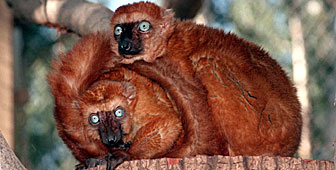New light shed on primate origins

A team of scientists from Switzerland, the United States and Britain believe man's origins could be older than previously thought.
Dr Robert Martin of the Field Museum in Chicago said all primates, including humans, could have evolved from an ancestor existing around 85 million years ago – when dinosaurs still walked the planet.
“All living primates must be derived from a single species,” he said. “We are trying to work out how old that original species was.”
Palaeontologists put the date at around 65 million years ago, but Martin and his team say the estimates are inaccurate because so few early primate fossils have been found.
“Our calculations indicate that we have fossil evidence for only about five per cent of all extinct primates, so it’s as if palaeontologists have been trying to reconstruct a 1,000-piece jigsaw using just 50 pieces,” said Martin.
Man’s ancestors
If Martin and his colleagues are right, the common ancestor of all primates, including humans, may well be an 85-million-year-old creature that looks like a lemur. A lemur is a tree-living creature with a pointed snout and a long tail, currently found in Madagascar.
The ancient ancestor would have had characteristics basic to the primate group such as grasping hands and feet, and it would have lived in trees, eaten a diet of fruit and insects and had small litters of young.
Dating man’s origins
The team based their research on the time gap between the oldest known fossil and the last common ancestor in a group.
They put the date at which humans and chimps split away from each other at three million years earlier than previously thought.
“Everything split earlier than we had thought, including humans from chimps,” said Martin.
The scientists calculated that there may be as many as 9,000 extinct primate species. At the moment there are fewer than 400 recorded fossils.
Martin and his colleagues believe that there were many smaller primates that started life in southern latitudes. As their numbers grew, they expanded northwards, where the conditions were not as good for fossil preservation.
The findings, published in the journal Nature, are backed up by work some molecular biologists have been doing. They have used the comparison of DNA sequences to calculate that primates split from other placental mammals about 90 million years ago.
swissinfo with agencies.

In compliance with the JTI standards
More: SWI swissinfo.ch certified by the Journalism Trust Initiative
You can find an overview of ongoing debates with our journalists here. Please join us!
If you want to start a conversation about a topic raised in this article or want to report factual errors, email us at english@swissinfo.ch.